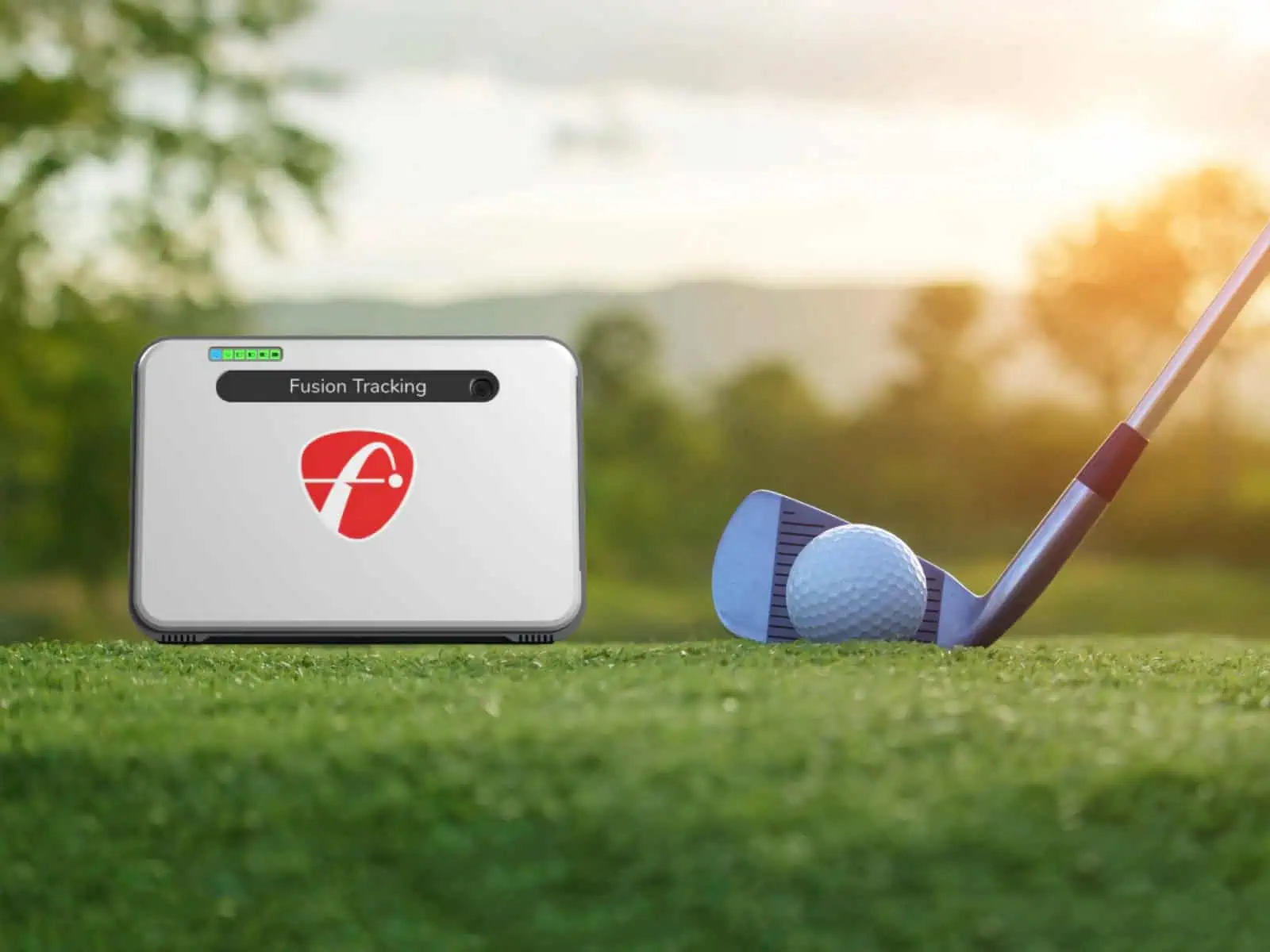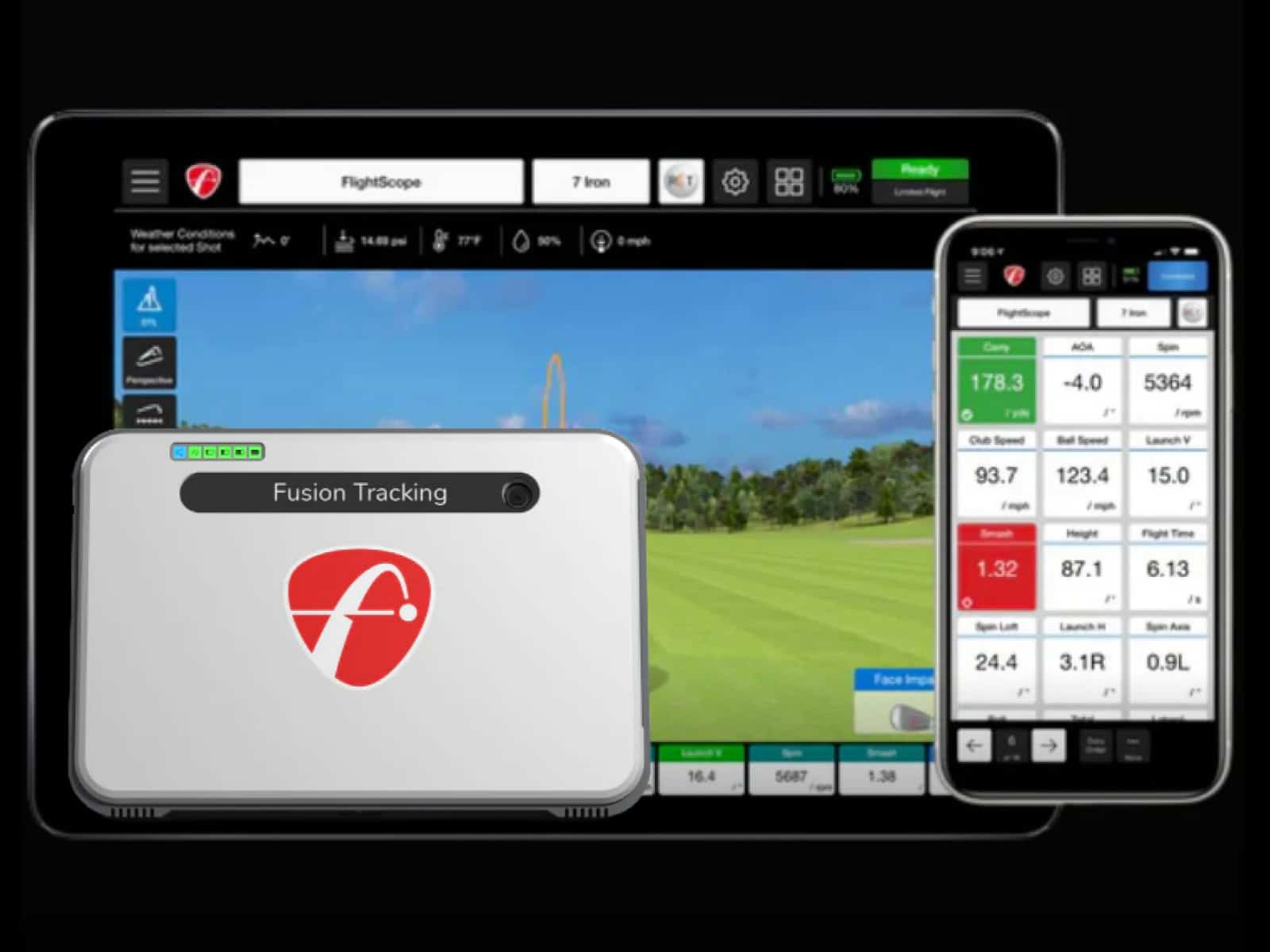Every swing tells a story. Some are long drives that split the fairway; others are quick lessons in humility. FlightScope listens to every one of them through radar precision, tracking club movement, ball flight and even putting roll with scientific accuracy.
What makes this technology great is how it turns cold numbers into clear insight. It doesn’t just say how far you hit; it shows why. Whether you’re chasing more carry, steadier spin or tighter shot dispersion, the data spells out the path.
Each FlightScope model, Mevo, Mevo Gen2, Mevo+ and X3/X3C, delivers those data points at different depths. The smaller Mevo keeps things simple; the X3/X3C goes all-in, capturing nearly every measurable element of your swing. The idea stays the same: give you the numbers that matter, without the noise.
This guide breaks down what each metric means, how to read the data and where each model fits your game. Because once you understand your numbers, improvement stops being guesswork, and starts being golf.
Understanding FlightScope Data
Flightscope’s radar system measures both club and ball data in real time, capturing how the club moves and how the ball reacts. You’re seeing your swing translated into numbers that explain every shot.
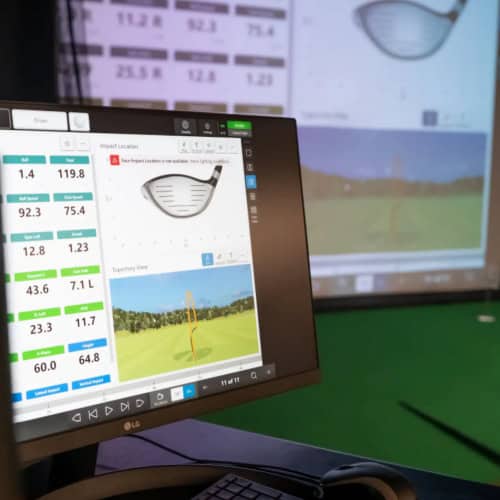
The radar follows both the clubhead and ball through impact. It reads launch, speed, spin and angle within milliseconds. That information tells you why one drive carries 250 yards and another balloons at 230. The magic isn’t in guessing distance; it’s in understanding cause and effect.
What makes FlightScope powerful is how connected the data points are. A change in club path affects spin axis. Face angle shifts launch direction. Tiny tweaks in dynamic loft change carry and rollout. When you see those links, your swing starts making sense instead of feeling random.
Think of it as a feedback loop. You swing, FlightScope captures the data, and you make a better decision on the next swing. Over time, that loop sharpens your feel for distance, direction and consistency; it’s no different from how a pilot relies on instruments for precision.
Core Ball Data Metrics Explained
These FlightScope metrics break down every element of ball flight so you can see what’s working, what’s not and how to fine-tune your swing for more distance and control.
Carry Distance
Every golfer cares about one thing: how far the ball flies. Carry distance measures that exact yardage from impact to where the ball first hits the ground. It’s pure flight, no roll included. When you know your carry, you pick smarter targets and clubs. To get the most out of it, balance your launch angle and spin rate. Too much spin balloons the shot; too little sends it diving early.
Total Distance
Total distance is the full journey—carry plus roll. It changes with ground conditions, spin and descent angle. On firm fairways, a low-spinning drive runs forever. On soft turf, it stops dead. Understanding how spin and launch affect roll helps you predict results on any course.
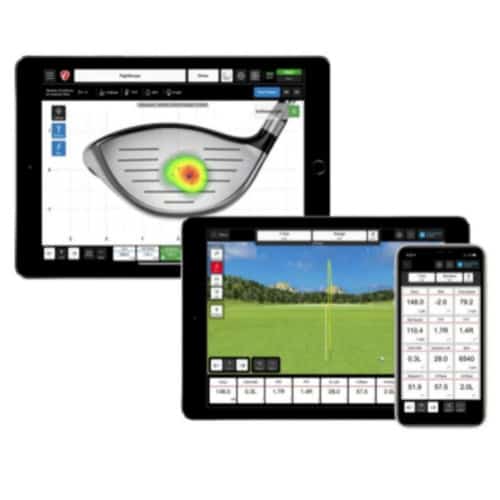
Ball Speed
Ball speed tells you how fast the ball leaves the clubface. It’s the heartbeat of distance. A higher ball speed means more energy transfer at impact, often linked to a centered strike. Track this number if you want to see instant feedback on strike quality and equipment changes.
Spin Rate
Spin is your shot’s steering wheel. Spin rate measures how fast the ball rotates after impact—backspin, sidespin, or a mix. It controls height, curve and stopping power.
Too much backspin kills distance; too little makes holding a green tough. Each club has a healthy spin window, so learn yours and aim to live inside it.
Launch Angles (Vertical & Horizontal)
Launch angle defines trajectory. The vertical angle decides how high the ball climbs; horizontal launch sets the initial start line. Hit too low, and you lose carry. Too high, and the wind eats distance. When both align with your intended target, you’re halfway to the perfect shot.
Apex Height & Flight Time
Apex height is your ball’s peak altitude. Flight time tracks how long it stays airborne. Both help you gauge consistency. If two drives have the same speed but different apex heights, one of them is leaving distance on the table. Adjusting launch and spin tightens that gap.
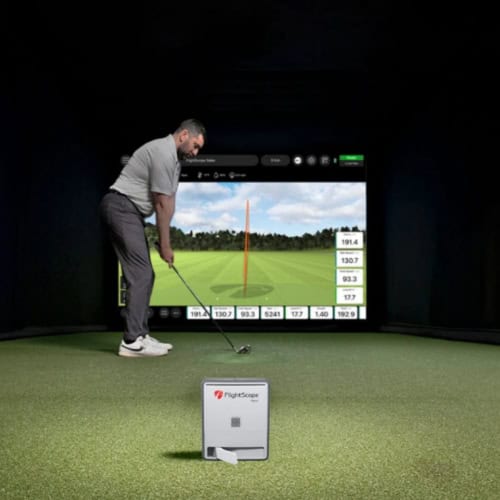
Spin Axis & Shot Curvature
Spin axis defines whether the ball curves left or right. Tilt it one way and you’ve got a draw; tilt it the other, a fade—or worse, a slice. That tilt comes from how the clubface and path interact at impact. Understanding your spin axis is like learning your signature; it never lies about your swing tendencies.
Core Club Data Metrics Explained
FlightScope’s club data shows you what happens in the split second that decides every shot—speed, direction and contact quality. Each number here reveals a piece of the puzzle that shapes consistency and distance.
Club Speed and Acceleration Profile
Club speed measures how fast the clubhead moves at impact. Faster speed equals more potential distance, but only if you hit it clean.
The acceleration profile tracks how that speed builds from the start of the downswing to contact. A smooth acceleration pattern creates repeatable power, while abrupt changes often point to timing issues or swing tension.
Smash Factor
Smash factor is the simplest ratio in golf: ball speed divided by club speed. It tells you how efficiently you’re transferring energy into the shot. A driver near 1.5 means solid contact; lower numbers suggest a mishit or off-center strike.
Small improvements here often add more distance than swinging harder ever could.
Club Path and Face Angle
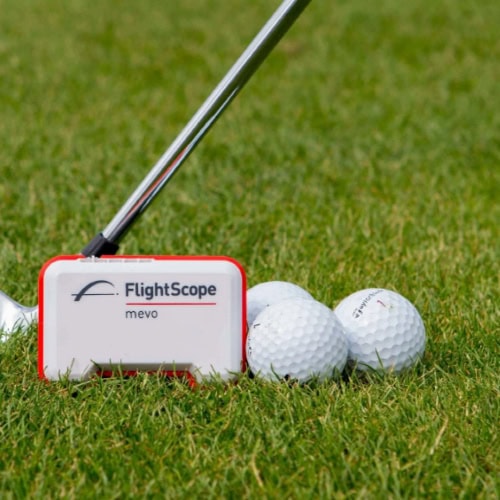
Club path is the direction your clubhead travels relative to the target line. Face angle is where the clubface points at impact. Together, they decide shot shape. An inside-out path with a square face makes a draw; an open face sends a fade or slice. Understanding how your face angle reacts to your path is the key to consistent shot direction.
Dynamic Loft and Angle of Attack
Dynamic loft shows the effective loft at impact—different from what’s printed on the club. It’s influenced by hand position, shaft bend and strike location.
Angle of attack reveals whether the club is moving up or down at impact. Positive for drivers, negative for irons.
Get this relationship right, and the ball launches in that perfect window for distance and control.
Spin Loft and Swing Planes
Spin loft equals dynamic loft minus angle of attack. It determines how much spin you put on the ball. Too high and you lose distance; too low and you lose control.
Swing planes—horizontal and vertical—track the geometry of your swing path. A repeatable plane creates consistent ball flight, and small deviations often explain why one swing feels perfect while the next one doesn’t.
Low Point and Face-to-Path
Low point marks the bottom of your swing arc. For crisp irons, it should happen just after impact; for drivers, slightly before. Face-to-path measures how much the clubface deviates from your path at impact, directly influencing spin axis and curvature.
Mastering these two metrics gives you predictable ball flight, and that’s how you start calling your shots instead of chasing them.
Putting Data Metrics

Putting is where rounds are won or lost. You can bomb drives all day, but if the flat stick doesn’t behave, the scorecard tells a different story. FlightScope brings precision to putting by tracking how the ball leaves the putter, how it rolls and where it stops.
Launch Speed
Launch speed measures how fast the ball leaves the putter face. Too quick, and you’re racing past the cup; too slow, and you’ll be short every time. This number reveals whether your tempo matches the green speed.
Once you know your ideal launch speed, you can adjust your stroke to match any surface.
Ball Direction
Direction sets the line. Even perfect pace means nothing if the ball starts off target. Ball direction shows where the ball begins relative to your aim point. A putt that starts just one degree off-line can miss the hole entirely on longer putts.
Use this feedback to fine-tune alignment and face control at impact.
Total Distance
This metric measures how far the ball rolls before stopping. It’s the story of your putt’s journey from strike to rest. Too much launch speed, and you overshoot; too little, and you leave money on the table. Tracking total distance lets you build feel for pace, especially under pressure.
Why It Matters
Putting data exposes your tendencies in black and white. It shows if you decelerate, misalign or hit the ball inconsistently. Once you understand these numbers, you can groove a repeatable stroke that holds up on any green. Because at the end of the day, every putt counts.
FlightScope Model Data Parameters Overview
Choosing the right FlightScope model depends on how deep you want to dive into your data. Each model captures the essentials but scales up in detail, precision and use case, from backyard sessions to tour-level coaching.
#1 - Mevo

Mevo is the pocket-sized starter for golfers who want quick, accurate feedback without complexity. It tracks key ball data such as carry distance, ball speed, launch angle, spin rate, and apex height. Perfect for range sessions or indoor practice, it gives you the numbers that matter most for distance and consistency. Think of it as the gateway to understanding your swing.
#2 - Mevo Gen2

The Mevo Gen2 builds on the original by adding roughly 18 total data parameters. It sharpens spin readings, expands ball-flight data and adds more precise launch metrics. This model bridges the gap between personal and professional training. You still get the portability, but with a layer of sophistication for players serious about perfecting their numbers.
Check out our detailed review of the Flightscope Mevo Gen2 launch monitor.
#3 - Mevo+
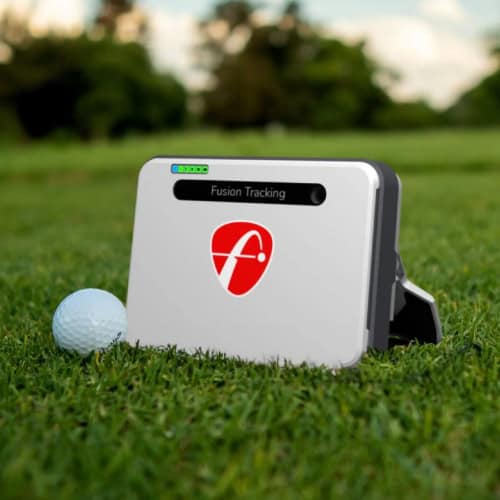
The Mevo+ steps into the big leagues. It measures both ball and club data, giving you around 20+ metrics to analyze every swing. Add the optional Pro Package, and you unlock more advanced metrics such as spin axis, club path, face angle, and angle of attack. It’s also simulator-ready, making it ideal for off-season work or indoor ranges where feedback and feel go hand in hand.
#4 - X3C

The X3C is FlightScope’s professional powerhouse. It tracks over 50 performance parameters—covering ball, club, putting, and even short-game data. Coaches, fitters and tour professionals rely on it for its precision and reliability. It reads everything: dynamic loft, impact location, spin loft, face-to-path, and more.
If you want every possible detail about your swing, the X3C leaves nothing unseen. You can know more by reading our review of the Flightscope X3C, or you can see how the upgraded X3C stacks against the original X3.
Applying FlightScope Data for Improvement
Data means nothing if you don’t know what to do with it. The real magic of FlightScope isn’t in the numbers, but in how you use them to shape your game. When you start connecting the dots between data and results, your practice stops being random and starts being progress.
Focus on the Big Three
Start simple. Ball speed, launch angle and spin rate form the foundation of distance and consistency. If your ball speed drops, check strike quality. If launch angle or spin looks off, your loft or angle of attack may need adjusting. You’ll be amazed how small tweaks here can unlock yards without swinging harder.
Check Your Contact
Smash factor tells you how well you transfer energy from club to ball. A low number often means a miss off the toe or heel. Work on centered strikes: use impact tape or spray to verify. When your smash factor improves, so does every other stat.
Control Your Direction

Club path and face angle determine whether your ball starts left, right or on target. If you’re missing one way, look at the relationship between the two. An open face on an out-to-in path guarantee a slice. Tighten this pairing, and your dispersion tightens, too.
Fine-Tune Launch and Spin
Dynamic loft and angle of attack are your flight controllers. Adjusting ball position, tee height or shaft lean changes both. Too much spin steals distance; too little reduces control. Find your personal sweet spot by experimenting and watching how the numbers react.
Measure, Compare, Repeat
Improvement comes from patterns, not single shots. Record your sessions and compare data over time. When your numbers start stabilizing, that’s progress you can trust. And if they drift, the data shows you where to refocus before bad habits settle in.
Frequently Asked Questions
Golfers often have questions once they start working with detailed radar data. These quick answers cover practical insights and lesser-known details to help you get more value from your FlightScope sessions.
How does FlightScope’s radar measure both club and ball data simultaneously?
It tracks both objects using Doppler radar reflections, capturing motion and velocity in milliseconds. This allows precise synchronization of club and ball tracking without extra sensors.
What’s the best combination of launch angle and spin rate for maximizing driver distance?
For most players, a launch angle around 13–15° with 2,000–2,600 RPM spin creates ideal carry and roll. Adjust based on swing speed and angle of attack.
Why do my indoor and outdoor total distances differ on FlightScope?
Indoors, rollout is estimated using modeling. Outdoors, actual ground interaction adds variables like firmness, slope and wind, changing total distance.
Can weather or altitude affect FlightScope readings?
Yes. Air density impacts flight distance. Higher altitude or warmer air increases carry, while colder, denser air shortens shots.
How is spin loft different from dynamic loft, and why does it matter?
Spin loft is the difference between dynamic loft and attack angle. Smaller gaps lower spin, while larger ones increase it, making it critical for distance and shot control.
Which FlightScope model provides putting data, and how accurate is it?
The X3/X3C measure around 12 putting metrics such as launch speed and direction with high precision, suitable for practice, fitting and coaching. The Mevo + measures only 3 putting metrics.
How can I use FlightScope data to detect off-center hits or mishits?
Drops in ball speed or smash factor signal off-center contact. Comparing face-to-path and spin axis data pinpoints direction and quality of impact.
Final Thoughts
FlightScope gives you a clear, data-driven window into your golf swing. It measures what your eyes can’t see: how the club moves, how the ball reacts and how each strike compares to the last. Once you learn what the numbers mean, you start making smarter adjustments instead of random guesses.
Small improvements in metrics like spin rate, launch angle or smash factor can translate into huge gains on the course. You don’t need to be a tour pro to benefit; you just need to track, interpret and act on the data.
Every swing tells a story. FlightScope lets you read it, and then rewrite it for the better.




